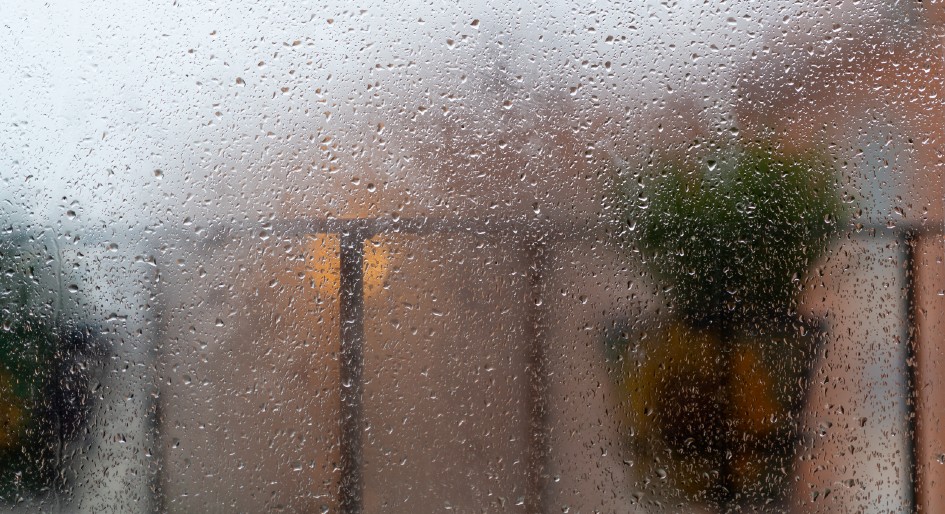Opting for high energy-efficient windows can significantly reduce the amount of condensation that appears on older windows. The new technology has special low-emissivity coatings (low-e) and is filled with inert gases, such as argon, which can also provide considerable energy savings. One issue that homeowners may encounter with these new windows is outdoor condensation.
Under specific conditions, such as quick temperature changes and high humidity, the exterior glass surface may cool below dew point temperature and collect moisture from the outside air. This is a natural occurrence and does not indicate any problems with the windows themselves.
With modern low-e glass, more heat is kept inside, resulting in a lower outer pane temperature and greater risk of condensation on the external surface. This is a sign that the windows are performing well. The condensation is a result of the windows creating a barrier between the inside and outside of the building, preventing heat from escaping and saving energy.
There are steps that can be taken to reduce or eliminate indoor condensation on energy-efficient windows:
- Increase ventilation in the room. This can be done by opening a window and increasing the airflow in the room;
- Set the furnace fan to run continuously and install a two-speed energy-efficient motor;
- Use a dehumidifier to remove excess moisture from the air. Reducing the amount of moisture in the air will reduce the likelihood of condensation on the windows;
- Install a heat recovery ventilator (HRV). The HRV provides the opportunity for continuous ventilation;
- Monitor the furnace humidifier. The higher the indoor relative humidity, the greater the chance of condensation occurring on cold surfaces. Maintaining a desirable and healthy humidity level will reduce your risk of mould;
- Run the exhaust fans for kitchen, bathroom and laundry rooms for longer periods;
- Make sure exhaust fans vent directly outside;
- Reduce the number of plants in your home and water them less. They release water vapours;
- Use the bathroom exhaust when showering or bathing; and
- Remove interior screens on windows during cold months.
Lastly, ensure that the windows are properly installed and sealed. If there are gaps or leaks around the windows, warm, humid air can enter the building and condense on the surface of the windows. Proper installation and sealing can help to prevent this from happening.
New windows should also be much more air-tight due to their improved construction and more efficient installation, sealing and caulking of your windows. Since they are more air-tight, the moist air in your home is less likely to escape. That means homeowners need to pay more attention to their indoor humidity levels.
Indoor condensation on energy-efficient windows is a natural phenomenon, which is not frequently encountered and occurs for a reasonably short period of time. Homeowners can take steps to mitigate its impact with proper ventilation and using a dehumidifier.
Thomas Noël is the director of the condominium division for Nordik Windows and Doors, the largest window and door replacement company in Ontario for the residential sector, including townhouses and condominium complexes four storeys or less. Thomas Noël sits on the Expert Advisory Council for Windows for the Ministry of Natural Resources Canada (NRCan) and advised on the launch of the $2.6 billion Canada Greener Homes Grant.







In older high rise buildings, fresh air is provided by a makeup air unit which is an air handler that brings 100% fresh air into the building. In these older buildings it feeds the suites via the corridors. Air from the corridors is intended to access the suites around the doors. Inadequate fresh air can also result in condensation.
If you have condensation you should make sure that your suite to corridor door is not weather stripped, preventing flow of this fresh air. Note that suite entry doors should only be weather stripped if your suite has a dedicated ERV or HRV that ventilates your suite directly.
If a condo board is struggling with condensation on a few floors in particular they should think about how they operate the variable frequency drive on the makeup air. If the unit is set to run at 60% at night, which many are, then it is likely that the most distant suites are getting no fresh air at all during the set back period. A fan that is balanced at 100% flow does not remain balanced when operating at 60% flow. Rebalancing for the lower flow setting may help.